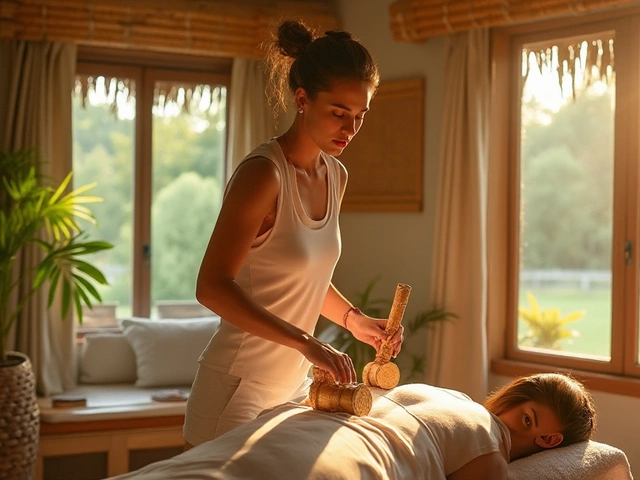Filipino healing: Hilot, suob and simple therapies that actually help
Filipino healing covers a bunch of practices rooted in homes and barangays. Hilot is the one most people know—a hands-on massage that focuses on joints, muscles, and the body’s alignment. But there’s more: suob (herbal steam), cupping-style treatments, and guidance from an albularyo or manghihilot. These traditions aim to ease tension and restore how your body moves.
Why try Filipino healing? It’s direct and practical. A good hilot session can loosen tight shoulders, ease lower-back restriction, and help you move more freely without heavy equipment. Many people appreciate the personal touch: sessions are usually conversational and adapt to what your body needs right then.
What to expect in a hilot session
A typical session starts with a short chat and hands-on assessment. The manghihilot will feel along your spine and muscles to find restricted areas. Oil—often coconut—is used, and techniques include long strokes, pressure on knots, and joint mobilizations. Sessions last 30–90 minutes depending on the issue. You might also get a short herbal steam or a topical balm for follow-up relief.
Good practitioners explain what they’re doing and why. They’ll ask about injuries, medications, and recent medical care. If you have serious symptoms—high fever, sudden sharp pain, uncontrolled bleeding, or signs of infection—stop and get medical help first. Traditional care pairs best with modern advice when needed.
Simple Filipino healing tips you can try at home
Use warm coconut or olive oil for gentle massage on sore areas. Apply heat for 10–15 minutes before working on tight muscles to relax them. Try slow, long strokes toward the heart for circulation. For neck stiffness, tilt your head gently while breathing deeply; don’t force motion. Steam a small towel with a sachet of ginger or eucalyptus and place it over tense muscles for 5–10 minutes—this is an easy suob-inspired move.
How to find a real manghihilot: ask in Filipino community centers, local markets, or trusted spas offering traditional services. Look for clean spaces, clear communication, and practitioners who ask about your health history. A good manghihilot won’t push beyond your pain and will recommend follow-up care or a doctor when needed.
Filipino healing is practical, tactile, and built for everyday aches. Use it for muscle tightness, mild stiffness, or stress relief. If you’re curious, book one session with an open mind and simple goals: loosen up, learn a few home tips, and see how your body responds. If something feels off, pause and seek medical advice.

Rediscovering Hilot: The Ancient Filipino Healing Art Explained
Explore the secrets of Hilot, the ancient Filipino healing art, its techniques, cultural roots, and practical tips for balancing body and mind naturally.

Unlocking the Secrets of Hilot: A Comprehensive Guide to the Traditional Filipino Healing Art
Hilot, a traditional Filipino healing practice, has been a cornerstone of wellness in the Philippines for centuries. This article delves deep into the heart of Hilot, exploring its history, methods, and the remarkable health benefits it offers. From improving circulation and reducing stress to fostering a deeper connection between mind and body, Hilot provides a holistic approach to healing that complements modern medical practices. Learn about the unique techniques of Hilot and how integrating this ancient practice into your wellness routine can lead to profound health benefits.
Categories
- Health and Wellness (148)
- Alternative Therapies (86)
- Massage Therapy (40)
- Travel and Culture (15)
- Beauty and Skincare (9)
- Holistic Health (8)
- Health and Fitness (5)
- Spirituality (5)
- Other (2)
- Personal Development (2)
Popular Articles



